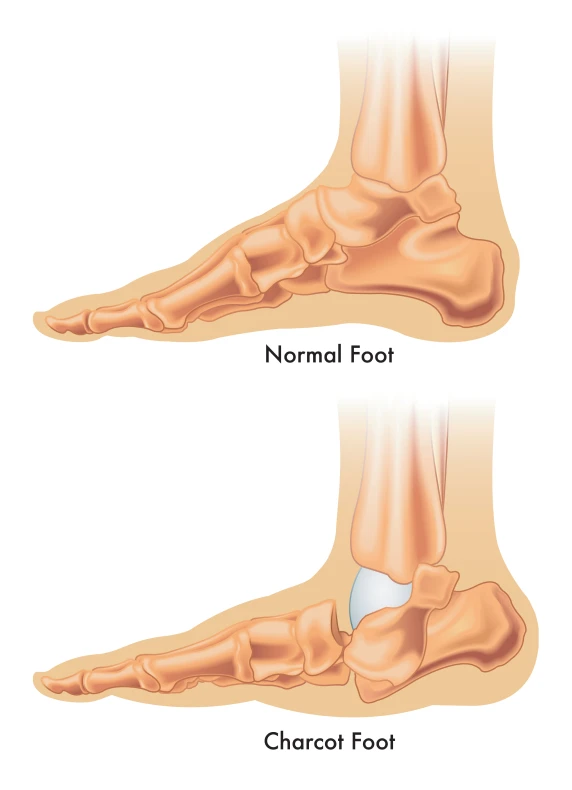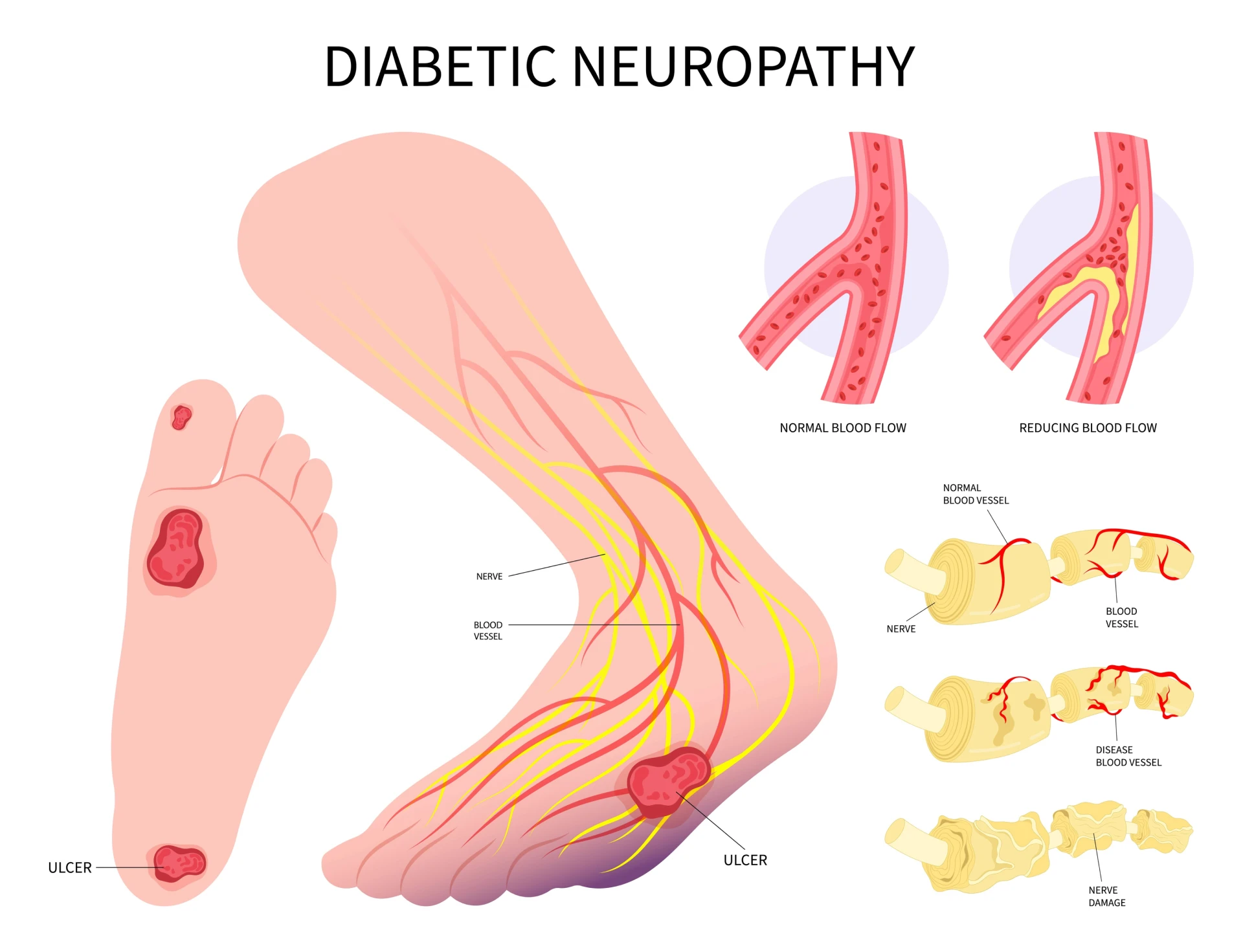Diabetics are accustomed to maintaining their blood sugar and monitoring their overall health to keep their diabetes in check. Unfortunately, many diabetics don’t pay as much attention to their foot health as they should, which can lead to serious diabetic foot conditions, such as infections, ulcers, gangrene, and Charcot arthropathy.
While any diabetic foot disease can become severe, Charcot foot often goes unrecognized by diabetics and – as a result – is left undiagnosed until the disease is in its advanced stages.
What is Charcot foot?
Also called Charcot arthropathy, Charcot neuropathy, and diabetes-related foot, Charcot foot is a complication of diabetes-related neuropathy – which is a type of nerve damage in the legs and feet caused by chronically elevated blood sugar. Although Charcot foot disease is rare, once present, it can become a major health concern with significant ramifications.
In a nutshell, Charcot foot is caused by the inability to feel cuts, infections, or injuries to the foot due to diabetic-related neuropathy. When diabetes patients experience significant nerve damage in their feet, they can suffer dislocations and fractures without even feeling the injury. Though Charcot foot can affect the joints, bones, and soft tissue of the foot and ankle, the hallmark deformity associated with this diabetic foot disease is the collapse of the midfoot, commonly called a “rocker-bottom” foot.
Charcot Arthropathy Symptoms, Causes & Risk Factors
The symptoms of Charcot foot can be subtle and easily overlooked by patients already suffering from neuropathy. Patients often mistake the redness and swelling caused by early-stage Charcot for an infection, as infections are much more common in people with diabetes. Additionally, only 25% to 50% of people with Charcot foot can recall a specific injury to the affected foot.
Advanced stages of this disease cause significant changes to foot shape – called Charcot foot deformity – and open sores that are prone to infection. Common severe symptoms include:
- Rocker-bottom foot – Where the bones in the midfoot break down, causing the arch to collapse and creating a downward bulge where the arch should be.
- Ankle deformity – The ankle curves or bends to one side, creating a significant shape change compared to the other ankle.
- Toe changes – To compensate for damaged tissue, broken bones, and arch collapse, the toes curl or curve under to create a stable grip.
- Foot ulcers – When advanced Charcot foot causes your foot and/or ankle to change shape, it puts added pressure on other areas of the foot not used to bearing your weight. This can cause open sores and ulcers that are susceptible to infection.
Causes
Though not the root cause, neuropathy must be present for Charcot to occur. Because Charcot foot occurs when a foot injury or infection goes undiagnosed and untreated, any medical condition that results in nerve damage or a lack of feeling in the feet – including diabetes – can cause Charcot foot.
Risk Factors
Diabetes is the number one risk factor for Charcot – and diabetics who smoke and drink alcohol regularly are at an even higher risk. Likewise, diabetics who have high blood pressure, high cholesterol, kidney disease, or obesity also have an increased risk of developing neuropathy that leads to Charcot disease.
What are the four stages of Charcot?
There are four recognized stages of Charcot foot disease, breaking down into active and inactive disease phases. The active phase involves often painless inflammation of the foot and the weakening of bones, which leads to fractures, joint destruction, and arch collapse that go unnoticed thanks to diabetes-related neuropathy. The inactive phase is characterized by less inflammation, but continual destructions followed by bony proliferations.
The Four Stages of Charcot Foot
- Inflammation Stage – The foot is red, hot, and swollen, though often painless.
- Fragmentation Stage – The foot suffers bone softening, fractures, and joint dislocations, along with the associated instability and flat or rocker-bottom deformity.
- Coalescence Stage – The body reabsorbs the bone debris during a process in which the bones are broken down by the body, releasing calcium and phosphate into the bloodstream.
- Reparative (Remodeling) Stage – The foot heals to a stable but deformed stage.
Can diabetic foot (Charcot) be reversed?
Unfortunately, Charcot foot cannot be reversed, as the presence of Charcot means the damage has already been done. There are, however, both non-surgical and surgical treatments for Charcot foot that can help prevent further complications and restore overall foot function and health. Ultimately, the best treatment for diabetic foot conditions like Charcot foot is prevention. If you live with diabetes, you should see a podiatrist regularly to monitor your foot health. The sooner Charcot arthropathy is diagnosed, the better your outcome will be.
If you would like to talk to a Charcot foot specialist or are looking for a podiatrist who can help you manage your diabetic foot health, please contact us today or comment below.

